Italian euro coins - catalog with values
Italian Republic
Reform 2002
Euro=100 euro cents
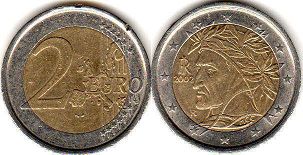 2 euro 2002 (2002-2006)
2 euro 2002 (2002-2006)
bi-metallic - nickel-brass/copper-nickel
2 EURO
IR / 2002
Coin value ~ 3-4 USD
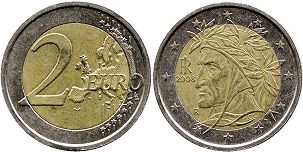 2 euro 2008 (2007- )
2 euro 2008 (2007- )
bi-metallic - nickel-brass/copper-nickel
2 EURO
IR / 2008
Coin value ~ 8-10 USD
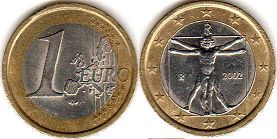 1 euro 2002 (2002-2006)
1 euro 2002 (2002-2006)
bi-metallic - copper-nickel/nickel-brass
1 EURO
IR / 2002
Coin value ~ 2-3 USD
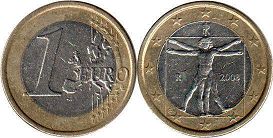 1 euro 2008 (2007- )
1 euro 2008 (2007- )
bi-metallic - copper-nickel/nickel-brass
1 EURO
IR / 2008
Coin value ~ 2-3 USD
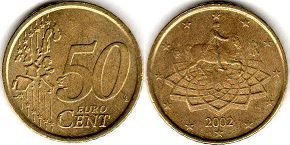 50 euro cent 2002 (2002-2006)
50 euro cent 2002 (2002-2006)
brass
50 EURO CENT
IR / 2002 / Sculpture of Marcus Aurelius on horseback
Coin value ~ US$1
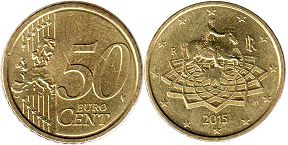 50 euro cent 2015 (2007- )
50 euro cent 2015 (2007- )
brass
50 EURO CENT
IR / 2015
Coin value ~ US$1
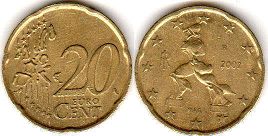 20 euro cent 2002 (2002-2006)
20 euro cent 2002 (2002-2006)
brass
20 EURO CENT
IR / 2002
Coin value
< US$1
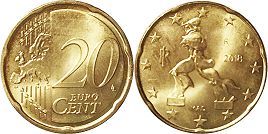 20 euro cent 2018 (2007- )
20 euro cent 2018 (2007- )
brass
20 EURO CENT
IR / 2018
Coin value
< US$1
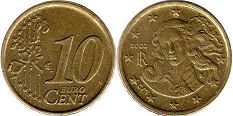 10 euro cent 2002 (2002-2006)
10 euro cent 2002 (2002-2006)
brass
10 EURO CENT
IR / 2002
Coin value
< US$1
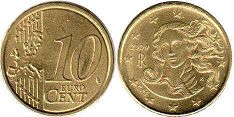 10 euro cent 2009 (2007- )
10 euro cent 2009 (2007- )
brass
10 EURO CENT
IR / 2009
Coin value
< US$1
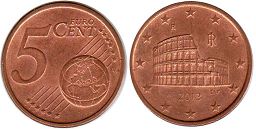 5 euro cent 2013 (2002- )
5 euro cent 2013 (2002- )
copper plated steel
5 EURO CENT
IR / 2013
Coin value
< US$1
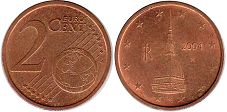 2 euro cent 2004 (2002- )
2 euro cent 2004 (2002- )
copper plated steel
2 EURO CENT
IR / 2004
Coin value
< US$1
 1 euro cent 2002 (2002- )
1 euro cent 2002 (2002- )
copper plated steel
1 EURO CENT
IR / 2002
Coin value
< US$1
Euro coins of other countries
Costs of Italian euro coins in this catalog approximate and indicated specifically for the coin shown in the picture.
I do not buy or sell coins - this is just a catalog.

